Poets say science takes away from the beauty of the stars -- mere globs of gas atoms. I, too, can see the stars on a desert night, and feel them. But do I see less or more? -Richard Feynman
Ahh, the stars that make up our galaxy, and the galaxies that make up our Universe. It's the simple power of the humble atom -- the protons, neutrons, and electrons that are the building blocks of everything on our world -- that powers all the stars and galaxies in the Universe.
But it didn't need to be this way! Why is it that all the stars in our galaxy, and in every other galaxy we observe are powered by matter, and not by anti-matter?
Because we know what antimatter looks like from its telltale signature from when it runs into matter: they annihilate!
And the annihilation signature would be extremely different if there were entire galaxies of antimatter out there; there aren't. And yet, on the other hand, whenever we run our powerful supercolliders, the only way we've found to make matter involves making an equal amount of antimatter, too.
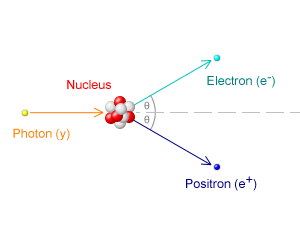
So how do we do it? How do we wind up with a Universe full of matter and virtually devoid of antimatter?
It turns out that the conditions for this were uncovered by Nobel-Prizewinning Soviet Physicist Andrei Sakharov. You just need three things to happen.
- You need an interaction that violates Baryon number conservation, which means you need to be able to make more protons than antiprotons or something akin to that.
- You need to violate CP-symmetry, which means (in English) that you need particles and antiparticles to decay into their various products at different rates.
- You need to be out of thermal equilibrium.
There are lots of different ways to make this happen; in fact, the Universe makes it very easy for you. Take the third one, being out of thermal equilibrium. Know what's out of thermal equilibrium?

Anything where -- for example -- the rate of expansion is faster than the rate of heat transfer. A supernova explosion (remnants shown above and below) does this, and immediately following the Big Bang, our entire Universe does this.

Small parts of our Universe are in thermal equilibrium, of course, but back when the Universe was young? Forget about it! For our Universe, being out of thermal equilibrium is easy.
It turns out that the first condition -- not conserving baryon number -- is easy too, so long as we're at high enough energies.

These particles and antiparticles, above, are the ones that make up matter and antimatter in the Universe. The quarks (and antiquarks) make up protons, neutrons, and the other baryons (and antibaryons), and these comprise the totality of the understood matter and antimatter in the Universe.
While in our low-energy world, we don't see this happening very often, even the boring old standard model lets us do this through well-known interactions. This happens very efficiently at high energies, which -- coincidentally -- is what the early Universe, right after the Big Bang, is known for!
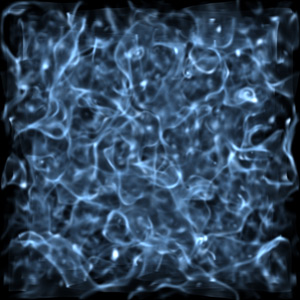
So, the last thing that we need is for the unstable matter particles we make to decay differently from the unstable antimatter particles that we make. We initially thought this was impossible, and indeed it is, if you look at the earliest unstable particles we made. The neutron, the muon, and the particles made up of up and down (and anti-up and anti-down) quarks only do not do this.
But once we found the third quark -- the strange quark -- we found a very strange set of particles: the Kaons.
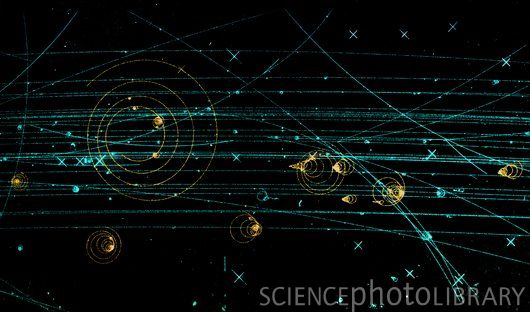
And they do! There is a fundamental difference between the decays of one type of kaon and the decays of its antiparticle. Let this happen in the Early Universe, and we should wind up with more matter than antimatter!
But, although this was discovered back in the 1960s, a huge problem remains: it isn't enough! The physics from this predicts that we'd only wind up with one ten-billionth the amount of matter we have in our Universe today.
So we need for there to be a bigger asymmetry, one we hadn't detected. But we always suspected that maybe one of the heavier quarks -- the charm, bottom, or top -- would have a big enough asymmetry to explain our Universe. And -- thanks to the D0 team at Fermilab (see paper) -- we may have just hit the jackpot.
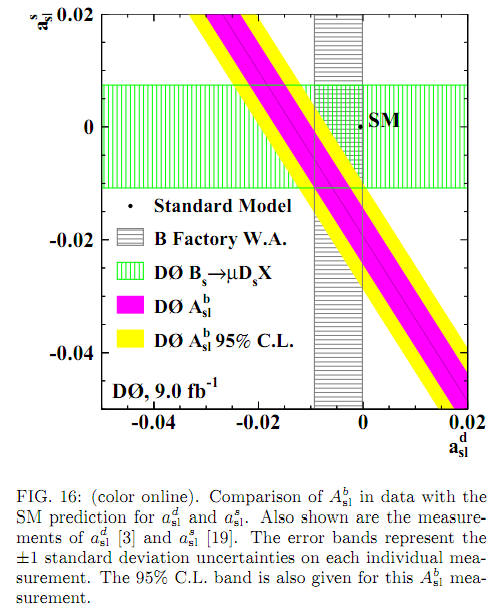
While the asymmetries due to the strange quarks were a tiny fraction of a percent, these asymmetries they're finally discovering from bottom quarks are huge!

Many orders of magnitude greater than the Kaons -- and far greater than the standard model predicts -- this discovery could be the missing piece of the puzzle to where the matter in the Universe comes from.
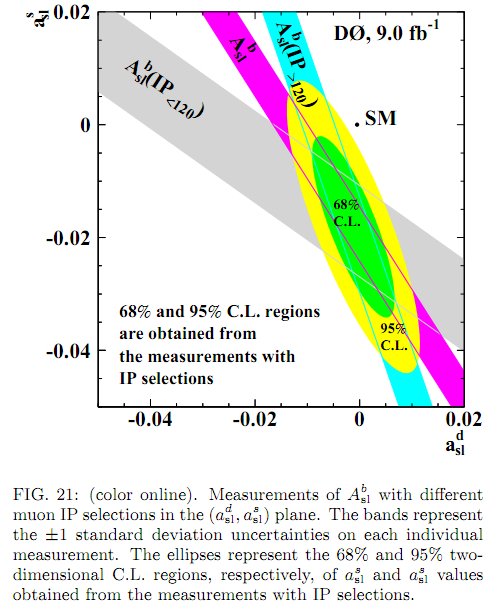
This is currently a 4-σ effect, almost good enough to be deemed an unequivocal discovery. While you should always be skeptical of initial reports of new discoveries -- especially of discoveries that indicate new physics -- this is a very well-motivated one.
The origin of the matter in our Universe -- what physicists call the Baryon Asymmetry -- is wikipedia's #2 unsolved problem in cosmology, behind "Why does the Universe exist?" If we can answer this question correctly, this is the biggest news for cosmology since the discovery of Dark Energy in 1998. We know it's going to take new physics to solve this problem, and this could be our first hint of it.
And now you're among the first to know!



Please could you elaborate on why we can be sure that other galaxies are not made of anti-matter?
Not a comment yet, but I read here all the time. Your enthusiasm is infectious. Thanks.
"1) You need an ... which means you need to be able to make more protons than antiprotons ....
2)You need to ... which means that you need particles and antiparticles to decay into their various products at different rates."
The explanation of how you possibly can make more particles than antiparticles always leads in the end to some explanation that basically just states that you need to be able to somehow make more particles than antiparticles. I remember a blog here that tried to explain 2) above via looking at the decay of a neutron. It was not a bad article, but the the main conclusion was basically: You need to be able to make more particles than antiparticles.
The Nobel-winning Soviet physicist is unnamed. I think a line dropped out of your text.
Sakharov?
#4 The Nobel-winning Soviet physicist is unnamed. I think a line dropped out of your text.
It is a mess-up with the link. There was a cross-over event between the text of the link and the URL of the link.
The physicist was Andrei Sakharov.
Ethan, I was struck by the similarity between http://scienceblogs.com/startswithabang/upload/2011/07/going_up/nature0… and http://scienceblogs.com/startswithabang/upload/2011/07/is_this_where_th…
Are the thermal processes that led to the filamenty structure of the Crab Enula akin to the ones that led to the large-scale structure of the universe?
Ian @1,
In addition to the theoretical problems one would face if we wanted to create such large amounts of matter and antimatter anisotropically, we have a strong observational piece of evidence that points away from antimatter galaxies. Galaxies interact with the intergalactic medium and with one another. They are sufficiently clustered together (i.e., not isolated from one another) that we would see the telltale lines of electron/positron and proton/antiproton annihilation.
Sascha @3,
It isn't circular reasoning to conclude this, as you might fear. The standard model itself admits sphaleron interactions, which violates Baryon number conservation as well as Lepton number conservation, while preserving B-L=0. So I can make a proton and an electron out of some high energy "junk" with the physics we know. #2, C and CP violating interactions while being out of thermal equilibrium are well known to happen in the weak interactions of the Standard Model. Getting enough of #2 to produce what we see is the current trick, and it's unclear whether it happens via GUT-scale relics, during Electroweak Symmetry breaking, via an Affleck-Dine mechanism or from Sphalerons after a period of Leptogenesis, or from something else entirely. But this D0 observation, if it holds up to further scrutiny, would make it a possibility that it happened at the EW scale.
Dan @4 and Childermass @6, thank you. It has been fixed, and it is indeed Sakharov.
Timberwoof @7, do a google image search for "supernova remnant". The patterns you see in the Crab Nebula are neat and very fun to look at, and may look similar to the large-scale structure of the Universe. But the gravitational force is weak enough and the matter involved low enough in mass that the Crab Nebula's structure, unlike that of the Large-Scale Structure of the Universe, cannot be explained by the process of gravitational collapse.
The reason that the universe is mostly 'matter' is that it is what is most common. If the universe were made up mostly of 'antimatter', that's what we would be familiar with and we'd call it 'matter'. (idle sophistry)
Ethan Siegel wrote (July 6, 2011 10:08 PM)
> the standard model predicts [...] we'd only wind up with one ten-billionth the amount of matter we have in our Universe today. So we need for there to be a bigger asymmetry, one we hadn't detected. [...]
The asymmetry value is of course a signed number, with the standard model preduction and the newly measured value both negative, and the latter with bigger magnitude.
The (pairwise, or individual) leptonic asymmetry being negative means by convention that more leptons (pairwise, or individually) than anti-leptons are being produced directly associated with decays of jointly produced b hadron and anti-hadron.
(In detector experiments, subsequent decays would surely produce more secondary anti-leptons than leptons, thus more or less compensating the asymmetry arising from direct production.)
> an interaction that violates Baryon number conservation [...] well-known interactions. This happens very efficiently at high energies [...]
How inefficient might this happen at the energies relevant for b hadron production or decay?
Would there be any baryonic asymmetry expected accordingly?
(Since baryons or anti-baryons may be produced in decays of b hadrons.)
Finally: ...
> How do we wind up with a Universe full of matter and virtually devoid of antimatter?
... can all this be made to fit into something like a simplistic but plausible "chain of events"?
An immediate idea like: ...
- plenty of b hadrons and anti-hadrons were around and started to decay,
- leaving a momentary excess of directly produced leptons,
- on which the "well-known interactions" acted (less and less efficiently)
... seems to end up with more anti-baryons and (secondary) anti-leptons, than the other way around.
Whoa,wait a minute...
Why is #4 still listed under Wikipedia's unsolved problems in cosmology? I thought you single-handedly tackled that problem down, Ethan?
Where you be at? Lol ^_^
If it was all anti-matter, wouldn't we call anti-matter matter and matter anti-matter?
And the one question you've failed to answer is how much anti-wood could an anti-woodchuck chuck if an anti-woodchuck could chuck anti-wood?
I'm not anything close to up on my physics, so some of the pictures you've got in the article are "cool but make no sense" to me. Like the 2nd one: what's going on there? Is that at a solar scale, or - what? I guess this is a plea for a bit of captioning.
"If it was all anti-matter, wouldn't we call anti-matter matter and matter anti-matter?"
And then anti-Kevin would say the same thing ;-)
And wouldn't it be "unchuck" or at least "pick up"? That's the anti- version of "chuck".
In 1964 or so at the University of Kansas, I was in the audience when Dr. Edward Teller gave a public lecture in which he advanced the idea that quasars were the observed result of a collision between a matter galaxy and an antimatter galaxy. Of course, this was before we had much of an understanding of black holes (and massive ones in galactic centers). So Dr. Teller was very wrong about this, but he had a lot of flashy computations to support his theory: how many stellar interactions (matter/antimatter) there would be, how much energy and at what frequencies would be released, how it would look from here/now, etc.
I just want to say I love the high resolution pictures you put up on this blog. almost every article you have, I end up changing my desktop background.
Ethan, thanks for the additional info. I had been mistakenly assuming that galaxies were isolated and didn't interact.
Now that's what I'm talking about! Great post, and thanks for the news!
This is interesting, but basically the issue of matter predominating over antimatter (oh yes, important enough ...) but not the issue of why there's any matter at all. Note first that the dark-matter problem shows we don't understand the basic physical laws behind "stuff" after all (i.e., not the issue of EM/gravity/QM rules per se but particle generation) since isn't it so, DM is likely not any of the familiar particles or any theorized either? I mean, stable stuff that is not photons, neutrinos, electrons, or ordinary baryons or their antiparticles as applicable, that's *news* and so all the glib pretense of our basically getting "stuff" right is false.
That also reminds me, the suspect nature of the glib claim "the energy of all the masses etc. in the universe is balanced by the negative gravitational energy so it can 'come from nothing'." Well, first of all that "nothing" is a physical vacuum or manifold with laws and dimensions, not "nothingness" - a now-misleading name like "atom." Second, you might have heard (like in Penrose's "Road to Reality") that gravitational field energy cannot be a simple local density like for E and B fields. (REM: when mass distributions change to require or do work, the energy lost or generated now has different red shift if projected away from the masses!) It being a global feature of geometry wouldn't in itself prevent such a balancing, I'm just noting the caveat of that complexity.
But the most damning issue is this: the ratio of the mass-energy causing the gravity, and the gravity field itself, depends on G. Imagine making all the masses in the universe (for the conceptual test of valid reasoning) 10x and G goes to 0.1x. That leads to same g-fields and motions but 10x mass to try and balance out - now they can't equate. That also shows the units weren't consistent for that claim, so I don't know how that muddle got started.
What really surprised me on this is that this is actually new, cutting edge research. You usually get the impression that, aside from the Higgs, we know everything there is to know about the particles of the SM.
With that in mind, have we seen all possible combinations to the point we can exclude quarks as the building blocks of dark matter? Do we know what the properties of a bcs particle are?
Of course the asymmetry of anti-protons, compared to protons, has been assumed by a number of physicists since they were first discovery in the middle to late 1950's when I first heard of their discovery.
It would be great if they have finally found evidence to support this long-standing hypothesis, which I think is by far the simplest explanation to explain the universe the way we see it.
I know in CERN, antimatter has created and tracked for some short times. I have a question, how can we create a case that antimatter is more than matter in experience?
Much of the POINT of this blog entry is un-understandable to me. As well none of the links help clarify the recent FermiLab research. As well the linked to DZero report, authored by over 500 physicists, is totally unreadable.
But Ethan said, "the D0 team at Fermilab (see paper) -- we may have just hit the jackpot."
So I searched for something intelligible to me.
Here's Fermilab's "Symmytry Breaking - Press release"
http://www.symmetrymagazine.org/breaking/2010/05/18/fermilab-scientists…
Now I can understand this; it's written in English. What an excellent piece of work!
This research not only disagrees with the standard model in a deep sense; it disagrees with my common sense understanding of the standard model. Let's hope Fermilab's results are confirmed and that we have some new physics.
If confirned how do they give a Nobel prize to 500 physicists. Why not!
and what of the asymmetries of the top quark? At what point will there be too much? Does this result in any way put an observable constraint on the top?
I just posted on one of your other blogs asking you questions that i just wanted your opinion on, and here you go solving the universe on a different post. If this is real than they have explained WHY THERE IS STUFF? You just blew my mind and if this turns out to be true, then we are one step closer to answering those mind blowing questions human kind asks themselves while staring up at the night sky.